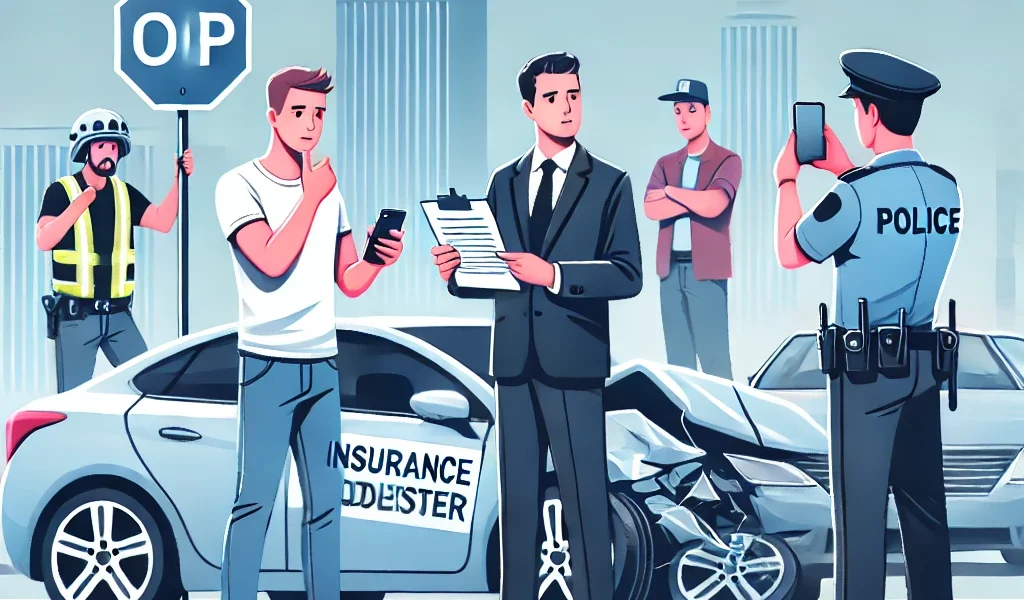Introduction
Car accidents are stressful and often come with financial burdens. Filing a car insurance claim can help ease some of these costs, but it’s essential to navigate the process correctly. Many policyholders make mistakes that lead to claim rejection or reduced compensation.
In this article, we will discuss the key do’s and don’ts when filing a car insurance claim after an accident. Following these steps will increase the likelihood of a smooth and successful claim process.
Do’s: Essential Steps for a Successful Car Insurance Claim
1. Ensure Safety First
- Check for injuries and seek medical help if needed.
- Move your vehicle to a safe location if possible.
- Turn on hazard lights to alert other drivers.
2. Report the Accident Immediately
- Contact the police and report the accident.
- Obtain a copy of the First Information Report (FIR) if required by your insurer.
3. Gather Evidence and Documentation
- Take clear photos of the accident scene, vehicle damages, and any injuries.
- Collect contact details of witnesses and the other driver(s) involved.
- Note down important details like date, time, and location of the accident.
4. Notify Your Insurance Provider Without Delay
- Most insurers have a deadline for reporting accidents (typically 24 to 48 hours).
- Provide all necessary details honestly to avoid complications.
5. Get a Repair Estimate Beforehand
- Visit an authorized garage or service center to get an estimate of repair costs.
- Some insurers require an inspection before approving repairs.
6. Follow the Correct Claim Process
- Fill out the claim form accurately and attach the necessary documents.
- If you have a cashless claim, take your car to a network garage.
- If you opt for reimbursement, save all repair bills and payment receipts.
7. Cooperate with the Insurance Surveyor
- The insurer may send a surveyor to inspect the damage before processing the claim.
- Be honest and provide all requested information to avoid claim delays.
8. Keep a Copy of All Documents
- Maintain copies of the accident report, claim form, repair bills, medical bills (if applicable), and insurance policy.
Don’ts: Mistakes to Avoid When Filing a Car Insurance Claim
1. Don’t Leave the Accident Scene Prematurely
- Leaving the scene before gathering evidence can weaken your claim.
- Always wait for police and insurance representatives if required.
2. Don’t Admit Fault Without Proper Investigation
- Avoid admitting fault or taking responsibility at the accident site.
- Let the police and insurance company determine liability.
3. Don’t Neglect to Collect Important Information
- Skipping documentation can result in claim denial or disputes.
- Ensure you gather all necessary details before leaving the scene.
4. Don’t Delay Reporting the Accident
- Late claims may be rejected due to missed deadlines.
- Always report the incident to your insurer within the stipulated time frame.
5. Don’t Repair the Car Without Approval
- If you repair the car before informing the insurer, the claim may be rejected.
- Always wait for the insurer’s approval before proceeding with repairs.
6. Don’t Provide False or Incomplete Information
- Misrepresentation can lead to claim denial or legal consequences.
- Always provide accurate details about the accident and damages.
7. Don’t Sign Any Settlement Without Understanding It
- Carefully read any settlement agreement before signing.
- If unsure, consult a legal expert or your insurer for clarification.
8. Don’t Forget to Check Your Policy Coverage
- Some claims get rejected because the accident falls outside the policy coverage.
- Ensure you understand your policy’s inclusions, exclusions, and deductibles.
Documents Required for Filing a Car Insurance Claim
To ensure a hassle-free claim process, keep the following documents ready:
- Duly filled claim form (available from your insurer)
- Copy of car insurance policy
- FIR copy (if applicable)
- Driving license
- Vehicle registration certificate (RC)
- Photographs of the accident and damages
- Repair estimate and bills
Cashless vs. Reimbursement Claims: Which One to Choose?
- Cashless Claim: If you repair your vehicle at a network garage, the insurer directly settles the bill with the workshop.
- Reimbursement Claim: You pay for the repairs upfront and get reimbursed by submitting the required bills and documents.
- Choose cashless claims for faster processing and lower out-of-pocket expenses.
- Opt for reimbursement claims if the repair shop is not in the insurer’s network but provides quality service.
What to Do If Your Claim Gets Rejected?
- Understand the Reason: Review the claim rejection letter for details.
- Request a Reconsideration: Provide additional evidence if required.
- Escalate the Complaint: Approach the Insurance Ombudsman if you feel the rejection was unfair.
- Seek Legal Advice: If necessary, consult a lawyer specializing in insurance disputes.
Conclusion
Filing a car insurance claim after an accident requires careful attention to detail. By following the do’s and avoiding the don’ts, you can maximize your chances of a successful claim. Always report accidents promptly, maintain accurate documentation, and communicate transparently with your insurer.
Following these best practices will help you navigate the claims process efficiently and receive the financial assistance you deserve.
Have you ever filed a car insurance claim? Share your experience in the comments below!




